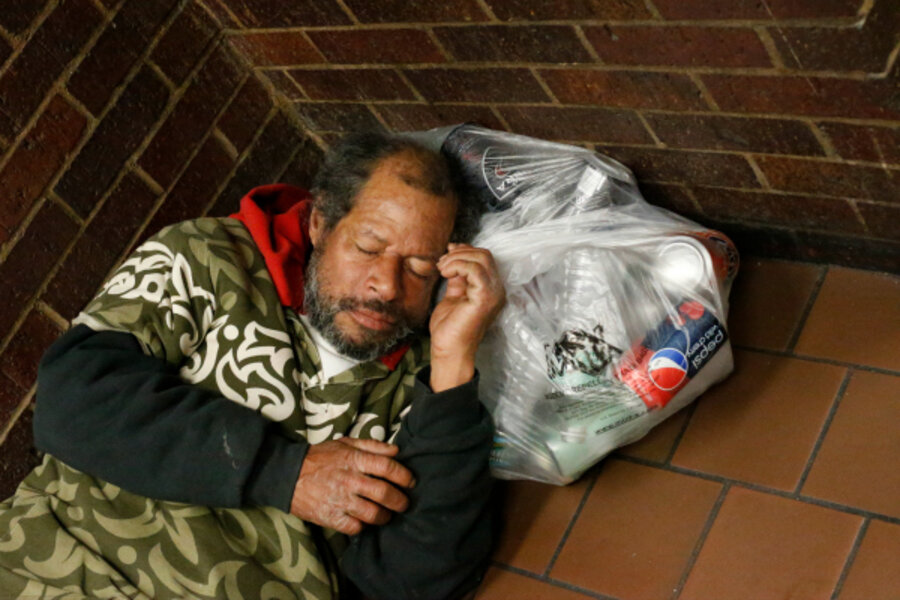If homeless people had a safe place to live, taxpayers could save millions
Loading...
In a world where money talks, evidence that putting a roof over someone's head is a boon to city budgets could be the incentive cities need to build housing for the homeless.
Researchers at the University of North Carolina–Charlotte's Department of Social Work have found that housing constructed specifically for homeless people saved the city millions.
Providing housing at an 85-unit facility called Moore Place resulted in 447 fewer visits to emergency rooms and 372 fewer days spent in hospitals, The Charlotte Observer reported. That alone saved the city $1.8 million—which makes plenty of sense. When people aren't exposed to danger from criminals or animals, and they don't get sick from sleeping in a doorway on a cold night, they're bound to be healthier.
Law enforcement costs were also reduced. Providing housing to Moore Place residents resulted in an incredible "78 percent drop in arrests and 84 percent fewer days spent in jail."
Moore Place accommodates men and women who represent the millions of Americans affected by stubborn housing and employment problems that took hold during the Great Recession in 2007. They are folks who were living paycheck to paycheck, got laid off, couldn't find another position, and so lost their home. There are also residents who struggle with mental illness or drug and alcohol addictions.
Although other housing facilities often require tenants to be sober before moving in, Moore Place is grounded in the "housing first" concept. The idea is that individuals with mental health or addiction issues are more likely to be able to deal with those issues if they have a stable home base.
The U.S. Department of Housing and Urban Development puts the number of homeless last year at 610,000 people. Homelessness dropped 4 percent from 2012 to 2013, but given the cuts to food stamps and expired unemployment benefits, officials expect homelessness to become much worse in 2014. There's also the reality that those numbers don't include people crashing on relatives' couches or sleeping in their cars.
This isn't the first time giving people homes (instead of leaving them on the street or throwing them in jails) has seen success. A similar project in Colorado converted a correctional facility to housing for the homeless, and the same positive results were borne out.
Now that the Moore Place model has proved itself, government and nonprofit agencies plan to work together to offer "incentives to encourage more permanent supportive housing projects for the chronically homeless."
• TakePart staff writer Liz Dwyer has written about race, parenting, and social justice for several national publications. She was previously education editor at GOOD.
• This article originally appeared at TakePart, a leading source of socially relevant news, features, opinion, entertainment, and information – all focused on the issues that shape our lives.
Related Stories on TakePart
The 10 Worst States for Student Homelessness
Low-Wage Workers at McDonald's Say They Don't Even Get the Minimum
Helping Veterans Find Their Foothold: How Social Workers Are Making a Difference





